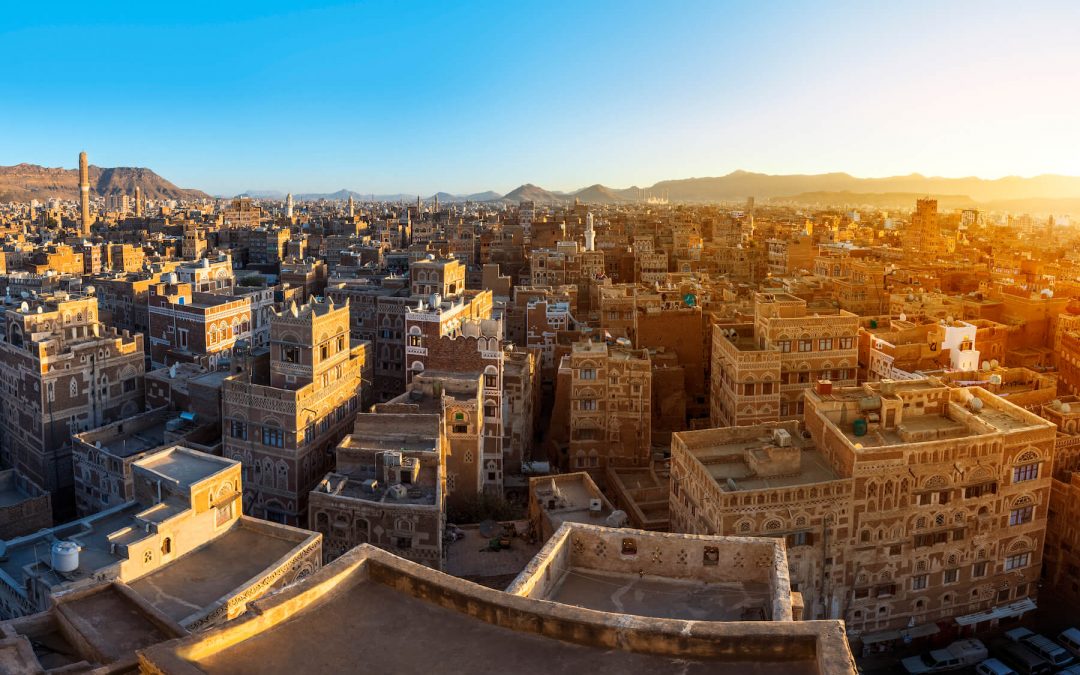Welcome to Min-On’s Music Journey! Today, the Min-On Concert Association and the Embassy of the Republic of Yemen to Japan welcome you to Yemen, located at the southern tip of the Arabian Peninsula in the Middle East.
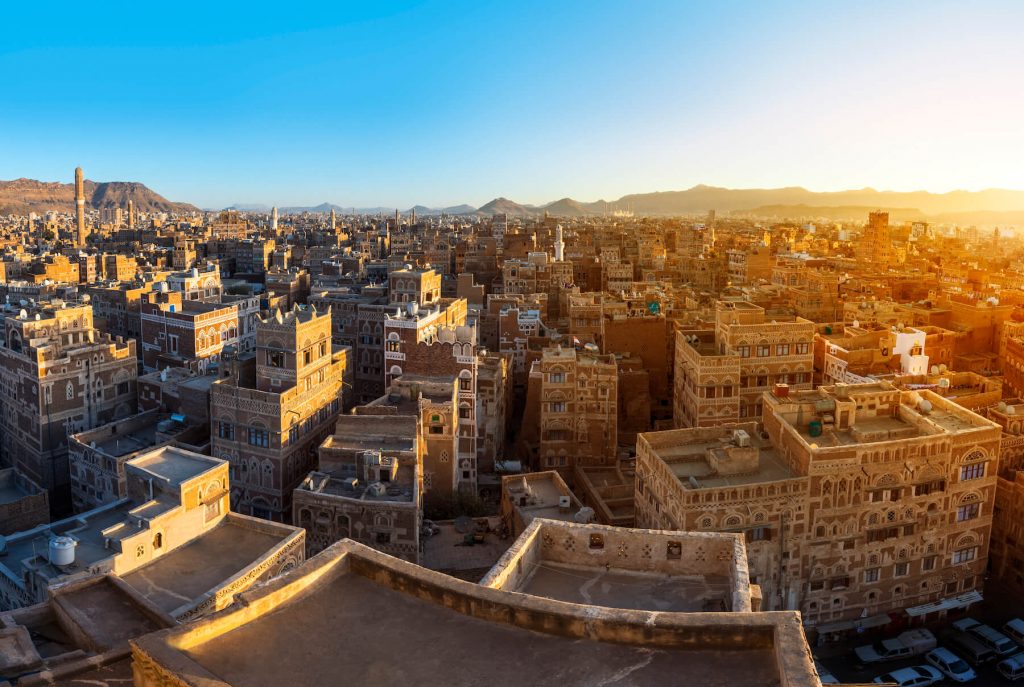
| Area | 555,000 square kilometers (about 150% the size of Japan) |
| Population | 29,830,000 (as of 2020) |
| Official language | Arabic |
| Geography and climate | ・Red Sea coast: Hot and humid, with temperature lows over 30°C
・Arabian Sea coast: Hot and humid, strongly impacted by monsoons ・Mountain region: Temperate climate year-round, with a wide variety of vegetation ・Desert region: Arid year-round, with temperatures up to 50°C in summer |
| Travel guide for Yemen:
・Visit the historic capital of Sana’a ・Sample famous local dishes, including mandi and saltah ・Learn about Yemen’s unique music culture and traditional dance |
Often called the “Silk Road of the Sea,” Yemen has flourished since antiquity as a trading hub connecting India and the Mediterranean Sea. It has also been called “the blessing of the Arab world.” Join us first as we journey to the capital city of Sana’a to experience Yemen’s culture and history.
Sana’a, one of the oldest surviving global cities
Yemen’s capital of Sana’a rests on a plateau 2,300 meters above sea level. The city’s historic district is surrounded by 12-meter-high walls, and it was once called “a skyscraper of brick,” known for its solid, complex structure.
Sana’a is believed to be one of the oldest cities in the world. Even today, the entire city is prized as a sort of open-air museum. The ancient Islamic architecture, such as the Great Mosque built in 630, is remarkably well-preserved, and UNESCO registered it as a World Heritage Site in 1986 for its historical value.
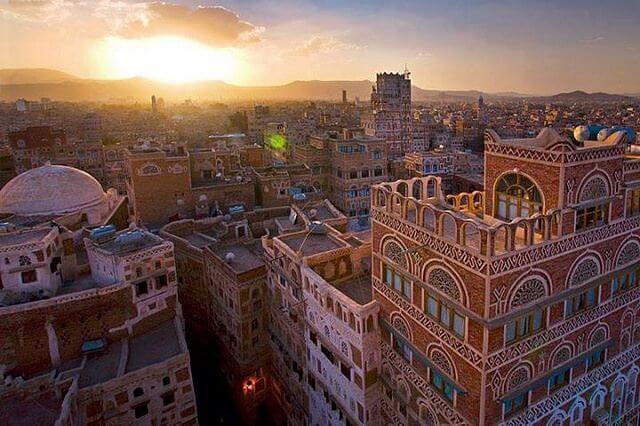
Yemeni clothing, food and architecture
Next, let’s look at Yemeni culture focused on three core aspects: clothing, food and architecture.
Clothing: Zanna and jambiya, a dagger passed down through the generations
The standard outfit of Yemeni men is a white one-piece garment called a zanna, worn with a jacket over the top. The distinctive feature of this outfit is a J-shaped dagger called a jambiya, which is tucked into a belt tied around the waist.
The jambiya dagger is an important symbol of the wearer’s pride in his family and heritage, and is passed down through the generations. Although each jambiya is a real sword, the wearer does not typically use it. Instead, it serves as a symbol of freedom and personal rights.
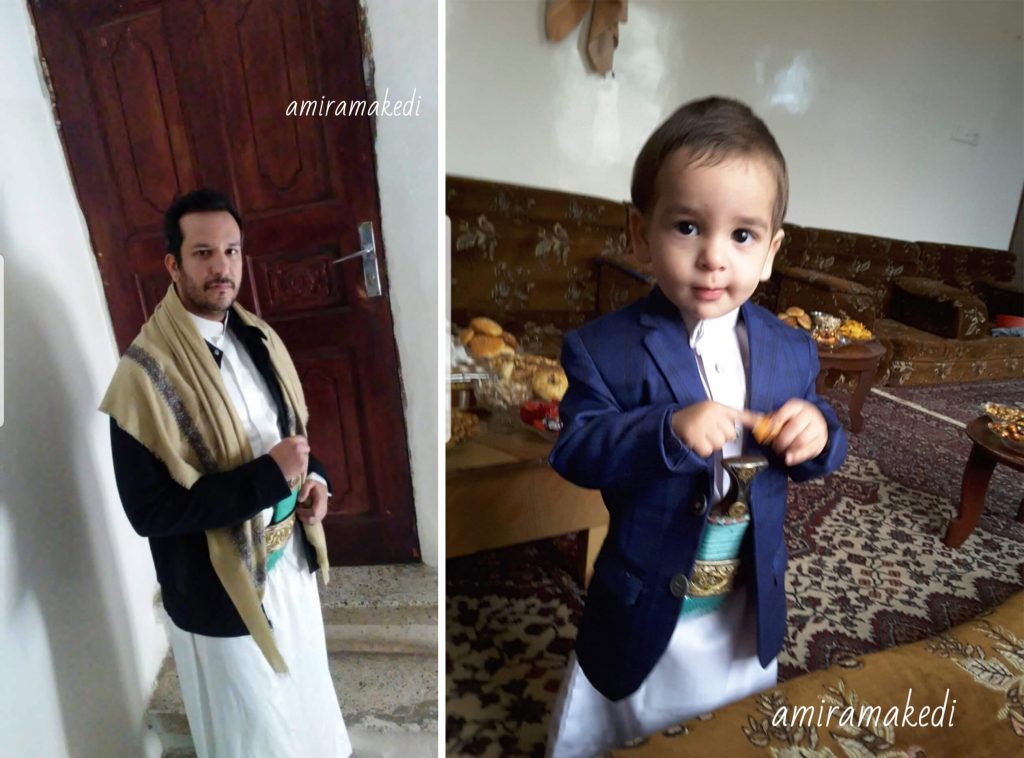
Food: Traditional cuisine and mocha coffee
Mandi is a Yemeni specialty that is now popular worldwide as an iconic Arabic dish – succulent, marinated chicken roasted and mixed with seasoned rice before being baked in an oven.
Another iconic Yemeni national dish is saltah – sauteed ground meat, stewed vegetables with tomatoes and rice baked at a high temperature in an iron pan.
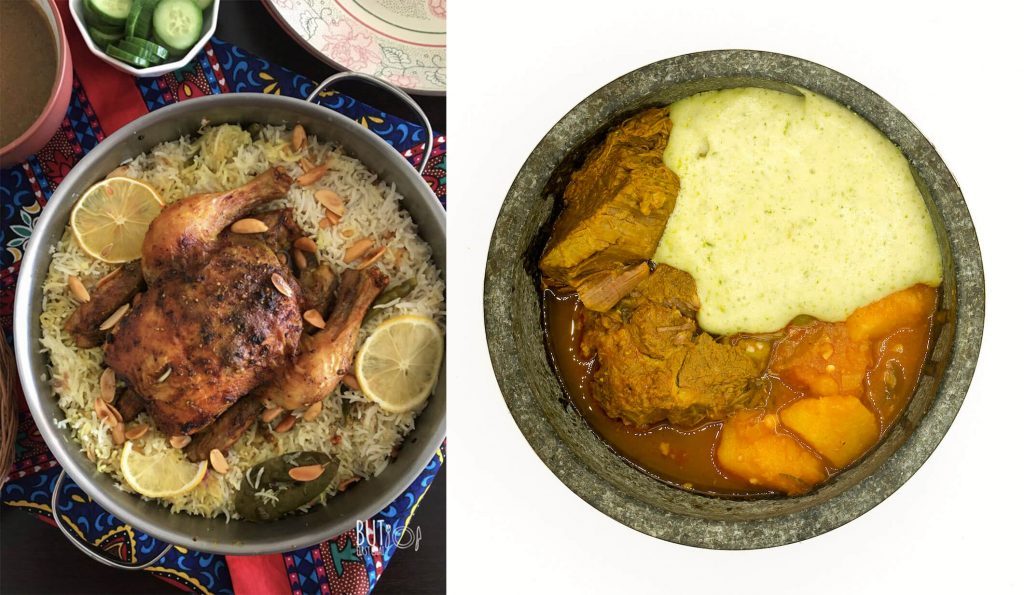
Yemen also produces one of the highest-quality varieties of mocha coffee, “mocha matari.” The term “mocha coffee” is said to have origins in the Yemeni port city, Mocha Port. The coffee beans grown in highlands surrounding the port are distributed worldwide.
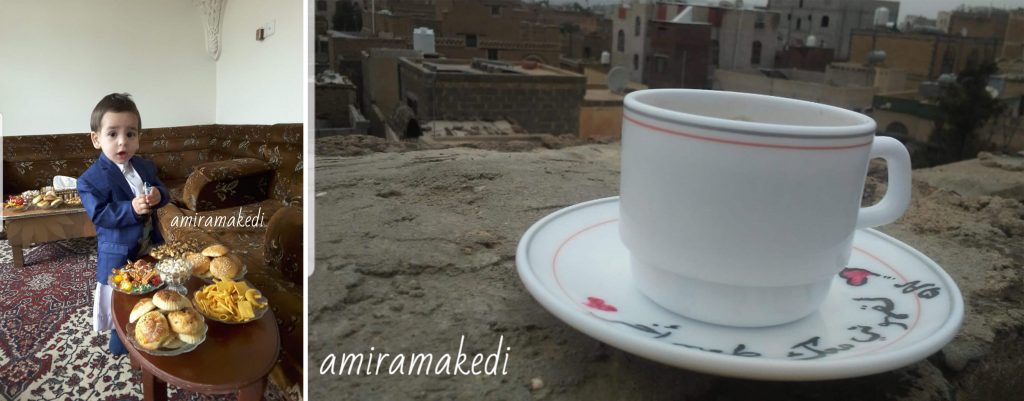
Architecture: An efficient ecosystem
Because Yemen has very few forests, the architecture in Yemen is known for its reliance on stone and sun-dried bricks for building materials. These stones and bricks are often stacked in tower-like structures. This style of construction developed in Sana’a over centuries, and the Yemeni people have established an efficient ecosystem that takes advantage of this unique construction used in many homes.
Each floor of these homes has a bathroom, and waste is sent down through the building to a dedicated collection site on the first floor. This waste is gathered from each home and used as fuel for the local hammam (steam-heated public bathhouse). Further, the burned waste is recycled again as fertilizer for vegetable gardens throughout the city. These vegetables, in turn, feed the city’s people. In this way, the Yemeni people have established a sustainable cycle that supports their daily lives.
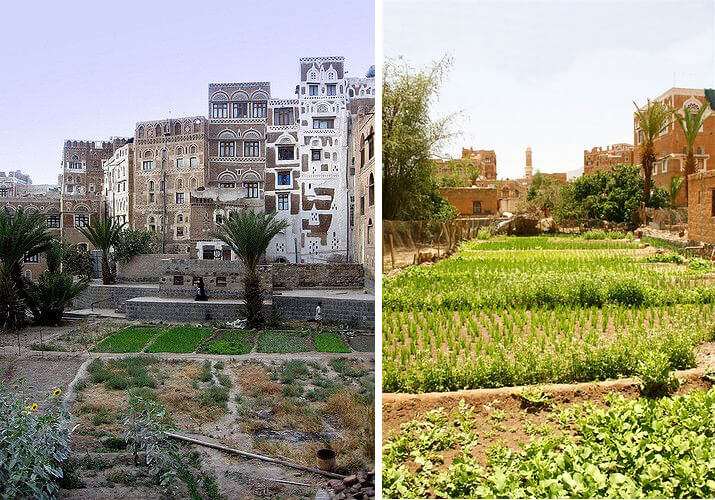
Yemeni music and traditional dances
For the Yemeni people, music has been an essential part of daily life since antiquity. Below, let’s explore some highlights of Yemeni music and art.
Traditional musical instruments of Yemen
| Old Sana’a oud | An ancient Yemeni lute, played it by plucking the strings with an eagle feather |
| Qanun | A traditional Arabic stringed instrument featuring many strings stretched over a trapezoidal soundbox. |
The Old Sana’a oud, also called the qanbus, is smaller than other types of oud that are more widespread in Arab regions. It is carved from a single piece of wood. The “Song of Sana’a,” which is played on the qanbus and sahn nuhasi, a copper plate, is a traditional piece of music that has been passed down orally in Yemen, and UNESCO has registered this song as Intangible Cultural Heritage.
The qanun is a stringed instrument with 27 rows of strings, where each row is a grouping of three individual strings. It has a range of three octaves. The scale of this instrument is fundamental to Arabic music, and is thought of as having established the core concept for all other Arabic instruments. Yemeni traditional music also uses other instruments, like the violin and flute.
In 2009, Min-On invited Oud player Ahmed Fathi to perform in Japan.
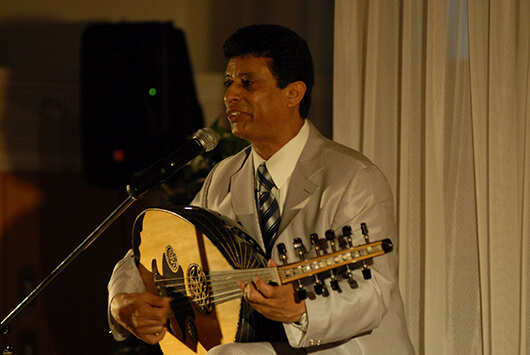
Traditional Yemeni dance, the al-bara’a
There are reportedly over 100 different culturally significant Yemeni dances. The most popular of these dances is the al-bara’a, a traditional dance that the Yemeni people perform at weddings and other celebrations.
Al-bara’a is well known for audiences forming a ring around the dancers, two or more of whom dance gallantly with their jambiya swords drawn to the beat of drums. The style of the dance differs by region, featuring different musical accompaniment, dance step speed and other unique characteristics.
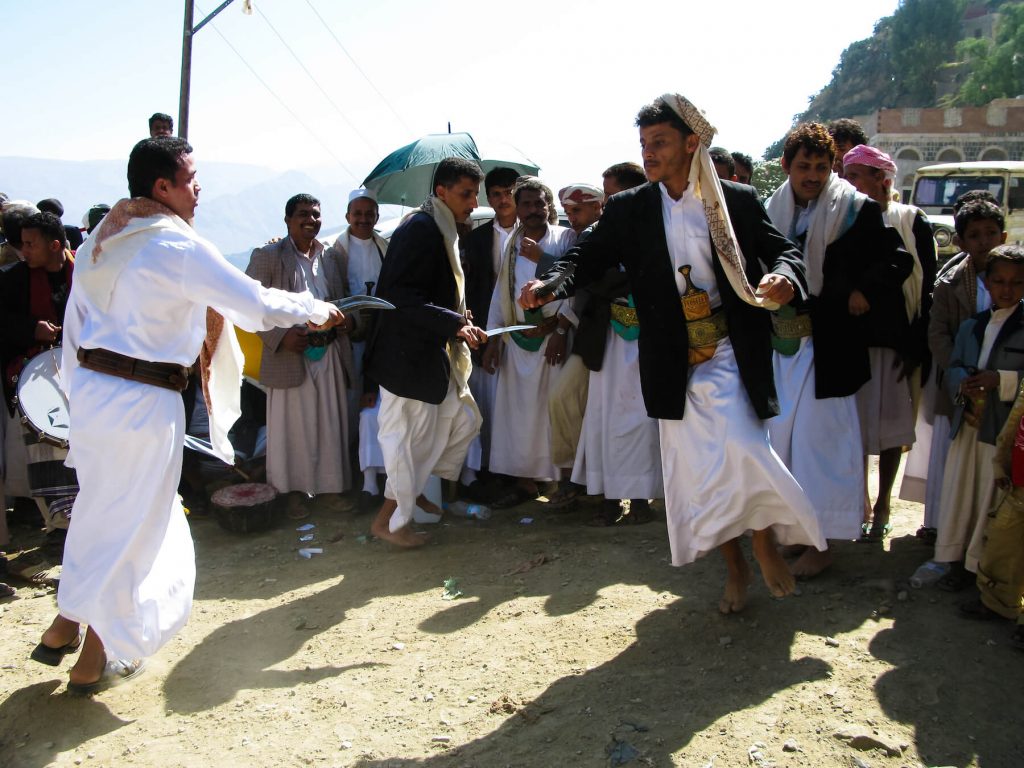
Musicians recommended by the Embassy of the Republic of Yemen to Japan
In closing, we would like to introduce musicians recommended by the Embassy of the Republic of Yemen to Japan.
- Balqees Ahmed Fathi
- Fouad Abdelwahed
- Hager Noman
- Omar Yassen
What did you think of your music journey to Yemen? There are still many more places to go! Please look forward to our next destination.
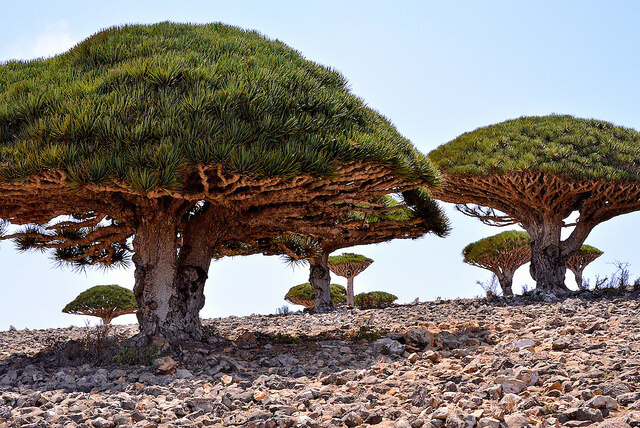
(Produced in collaboration with the Embassy of the Republic of Yemen to Japan, who also provided photos.)
Min-On Concert Association
-Music Binds Our Hearts-


